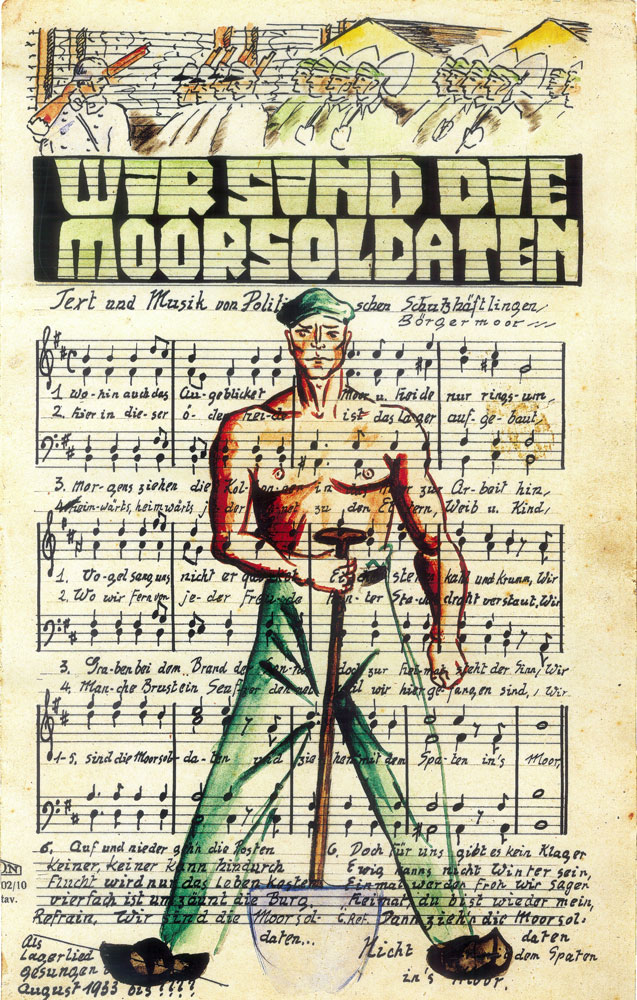The Börgermoorlied
In 1933, after an episode of particularly extreme violence by the SS in the Börgermoor camp in North Germany, Communist prisoner Wolfgang Langhoff asked the commandant for the right to organise a circus show in the camp. Aimed at countering the demoralisation among the detainees, this Zirkus Konzentrazani took place on Sunday 27 August 1933. The program included gymnasts, wrestlers, acrobats, two clowns, a comedian, and dancers. Musical interludes were played by makeshift instruments constructed by the inmates, and the program ended with songs for four voices sung a capella by a choir.
The last song was called Börgermoorlied (Song of Börgermoor). Composed by an amateur musician, Rudolf Goguel, on a six-stanza poem by Johann Esser, it denounced the camp living conditions and expressed hope of a future liberation. Its general aesthetic showed a strong influence from the repertory of Communist workers’ songs (Arbeiterlieder) during the Weimar years. It referred to the prisoners as “bog soldiers” (Moorsoldaten), alluding to their military appearance each time they moved out of the camp, with their spades over their shoulders like rifles, when they were forced to work in the bog nearby.
The song immediately enjoyed great success among the inmates, but also among the SS. In the following days some of them even ordered a copy of the sheet music to send to their families. The song quickly spread across Germany and entire Europe, within the camp system as well as in the countries where German political refugees went into exile – in two distinct musical versions: one heard in London by Hanns Eisler, who collected it from a German exilé and produced an arrangement in the vein of the Kampflieder (battle songs) that were dear to him; the other sung in Nazi camps by Börgermoor detainees after their transfer. Through its form, aesthetic, and the conditions of its production, the Börgermoorlied opened also the way for the composition of Lagerlieder (camp hymns) in other camps.
During the Spanish Civil War, Eisler’s version was recorded by his comrade Ernst Busch and sung in various battalions of the International Brigades. Circulating widely in all circles of anti-Nazi resistance, the song was soon translated in different languages, also in French internment camps, where it became known as “Le chant des Marais”. It became a powerful symbol of the struggle and the international solidarity against fascism. There are currently close to 200 versions of the Börgermoorlied. Still today, its many translations and arrangements attest to its ability to unite a transnational community in commemoration of the Deportation and in defense of liberties, beyond any border or political or religious division.
Élise Petit


